Log in or create new account to save this product to your wishlist.

Pruning Roses: when, why, and how
Roses are beautiful and famed for their romantic appeal. Find out how to prune them without damaging the plant!
🌱 All important maintenance moments for your lawn during the year. Leave your email and we will send you the lawn calendar for free.
Enter your email
Receive the lawn calendar in the mail
Enjoy a green lawn all year round!

- Order by 2PM = shipped today
- 250.000+ satisfied customers!
- 60 day satisfaction guarantee
Roses are the most romantic of blooms: blood red, dripping in cultural significance, and hardy enough to provide years and years of outstanding beauty. But, left to their own devices, rose bushes become leggy and unwieldy — so pruning roses becomes an essential garden task.
- Why is pruning roses so important?
- Pruning roses: a step-by-step guide
- When should you prune roses?
- The best tools for pruning
- Pruning different types of roses
- Ready to put your pruning shears to work?
- FAQs
But how do you prune your rose bushes? Do you really know what you’re doing, or are you cutting and hoping for the best?
In this ultimate guide, we’ll reveal the key to pruning roses with a range of aftercare techniques that ensure your bush bounces back in no time.
Ready? It’s time to start pruning!
Why is pruning roses so important?
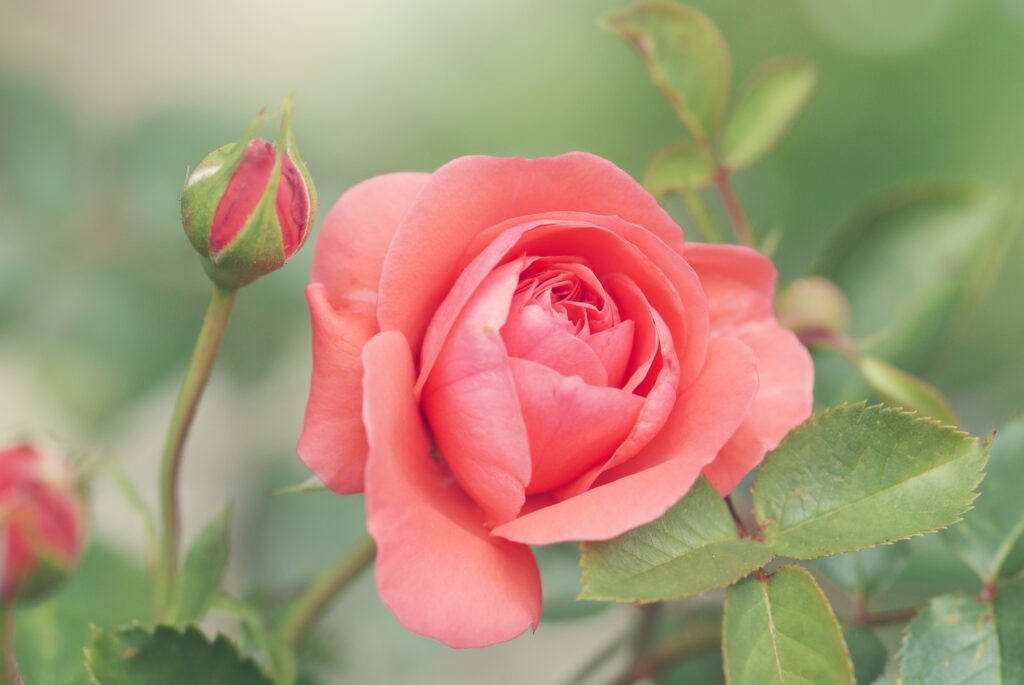
Pruning is an indispensable process that keeps your bushes healthy and producing new blooms. Improve the shape and size of the plant while stimulating fresh, controlled growth.
But why is it essential for the health of the plant?
Well:
- Firstly, it keeps the plant healthy because you remove damaged, diseased, or dead branches. This prevents diseases and pests from spreading to healthy parts of the plant.
- Secondly, pruning helps stimulate new growth while determining the shape and size of the place while improving flowering.
- Finally, pruning helps the plant recover after winter, promoting new springtime growth.
Pruning roses: a step-by-step guide
Prune your rose bushes like a pro with these expert tips:
- Use sharp pruning shears. Blunt shears tear through the stem, leaving a bruised, uneven cut, which promotes disease. Sharp shears ensure a clean cut, leaving less surface area exposed (and less chance of infection).
- Never prune back more than a third of the existing plant. Any further, and you’ll cause stress injury to the plant.
- Only remove branches necessary to maintain the shape and size of the plant. Over-cutting doesn’t mean you’ll need to prune less often — you’ll just weaken the plant.
- Never prune late into the season. Otherwise, the plant may suffer frost damage.
- Clean your shears with alcohol after pruning to prevent the spread of disease.
Pruning step-by-step
- Remove the leaves at the tip of each branch — this gives you a better overview of the shape of the existing bush, allowing you to see all the canes and interior growth.
- Prune off the dead wood — it’ll be brown on the inside of the stem. Cut until the stem is green, which means it’s alive. You may need to cut dead wood to the base.
- Remove crossing branches — now the outer leaves are gone, you can see inside the bush. Remove the crossing branches — these can rub together, exacerbating damage and disease. Aim for upward-reaching branches and a vase-like open structure.
- Remove weak or thin growth — remove anything thinner than a standard pencil.
- Prune back other canes — cut ¼” to ½” above an outward-facing “bud eye”. This is the small bump where the leaf meets the stem. The goal is to encourage outward rather than inward growth — new stems will grow in the same direction of the bud eye. Cut at 45 degrees, in a slope away from the bud, allowing water to run off the tip when wet.
- Seal the cuts — use a pruning sealer compound to protect the exposed cane from rot and pests.
- Clear up the surrounding area — clear up cut branches that surround the bush. Leaving them could encourage pests and diseases. Sterilise your pruning shears with isopropyl alcohol before you prune another plant to prevent cross-contamination.
- Feed your rose bushes — roses need plenty of nutrition, so use a long-lasting fertiliser to help the bush bounce back after pruning.
When should you prune roses?
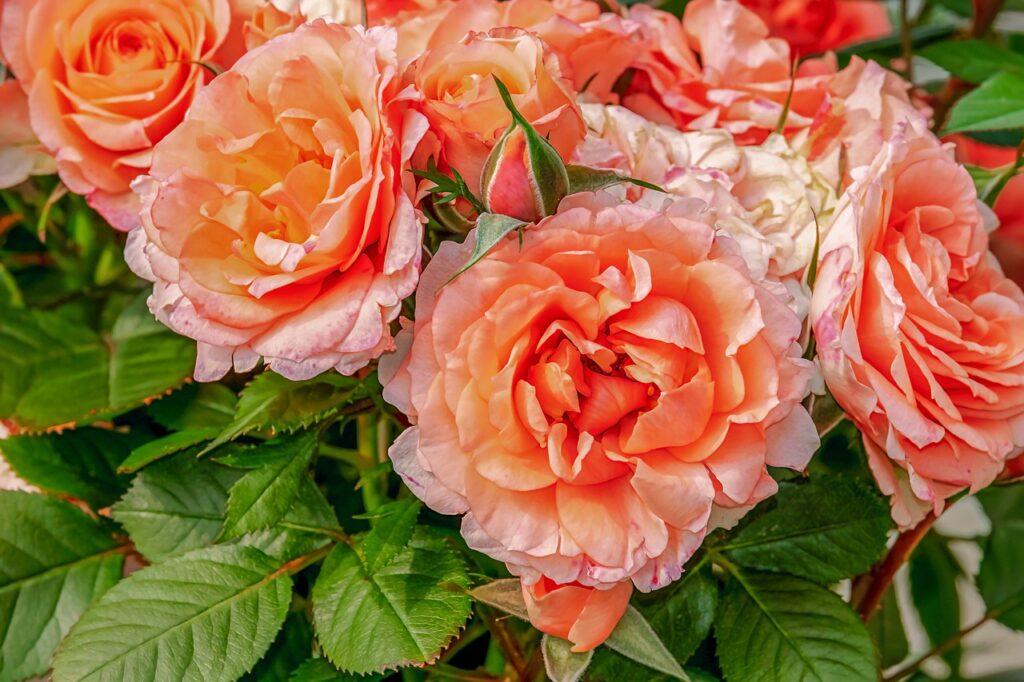
Generally speaking, you can prune roses in spring, autumn, and after flowering. Here are some tips for pruning during those specific seasons:
Pruning roses in spring
Complete the most significant pruning of the year in early spring when the plant has started to bud and leaf out. Wait until the frost risk has passed, and follow the step-by-step guide above.
Pruning roses in summer
Summer pruning is really confined to deadheading. Cut back dead flowers any time during the summer, which will encourage new blooms while maintaining the aesthetics of the bush.
Pruning in autumn
After the first frost, trim back the longer stems to stop them from snapping in winter storms. Avoid top-heavy bushes, which can be uprooted in gales and strong winds.
Remove any crossing branches, but don’t cut back too far, as it could trigger fresh growth, which will get damaged by winter frosts.
Remove dead and diseased wood, and clean your tools with alcohol to prevent the contamination of other plants.
Looking to prepare your garden for winter? Check out our expert article, 6 Winter Gardening Tips to Keep Your Garden Thriving in Winter.
The best tools for pruning
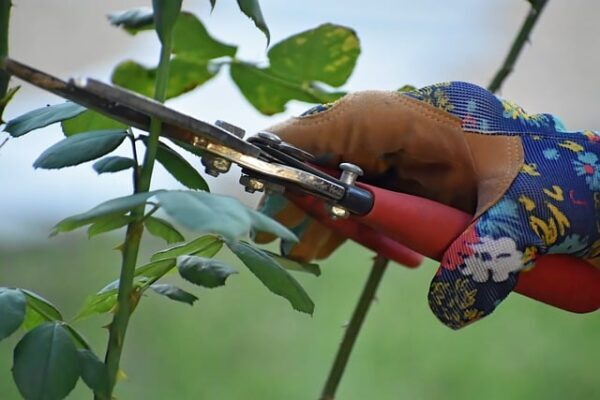
Roses might produce stunning blooms, but they’re prickly little buggers. So, I recommend the following tools:
- Pruning shears
- Garden gloves (an essential!)
- Saw — for thick or stubborn stems
Pruning different types of roses
Fossil evidence suggests that the rose family could be up to 35 million years old. And there are more than 30,000 varieties of rose plants to be found around the world.
And, of course, each variety requires different care. Of course, we’re not going to go into the entire family of 30,000 — that would make War & Peace feel like a holiday read.
However, let’s look at the pruning techniques for the most popular UK varieties.
1. Pruning shrub roses
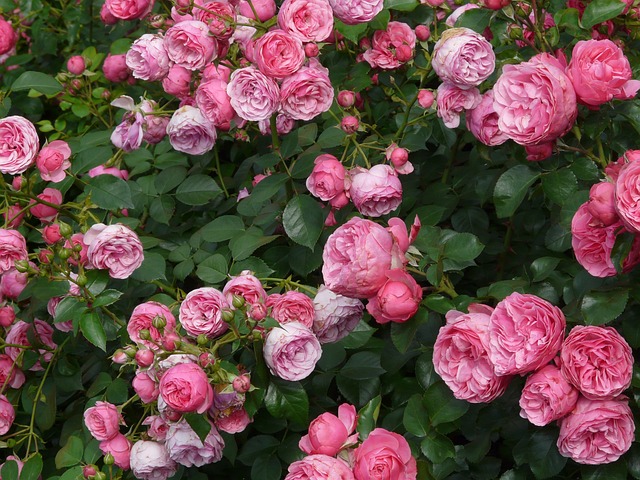
The shrub rose is relatively straightforward to prune. Follow the 8-step guide above, but wait until late spring or early summer for the best results.
Remove the dead, damaged, and diseased branches and deadhead faded blooms once the flowers have passed their best.
Prune just above a healthy bud or branch, and cut the stems back by around a third of their original length to promote robust and bushy growth.
2. Pruning stem roses
Stem roses are rose bushes that have been grafted onto a single trunk, resembling small trees. The pruning technique is similar to the 8-step standard approach but wait until late winter or early spring before the buds have sprouted.
Fertilise the plant regularly and provide plenty of water to keep the plant growing steadily throughout the year.
3. Pruning ground cover roses
Ground-cover roses are low-growing bushes that spread easily and cover the ground. Pruning these plants is relatively straightforward and best left till late autumn or early winter.
Remove thin, weak, inward-growing branches to promote better air circulation and flowering. Then, prune the other branches to around half their original length to encourage new growth in the spring and improved flowering once the weather warms up again.
4. Pruning climbing roses
Climbers are known for their lush, striking flowers and prolific summer blooming.
Remove dead or diseased branches to the plant’s base while cutting back the inward-growing and intersecting stems that might rub together.
Prune remaining branches to around half their original length to ensure new growth and abundant flowering.
5. Pruning rambler roses
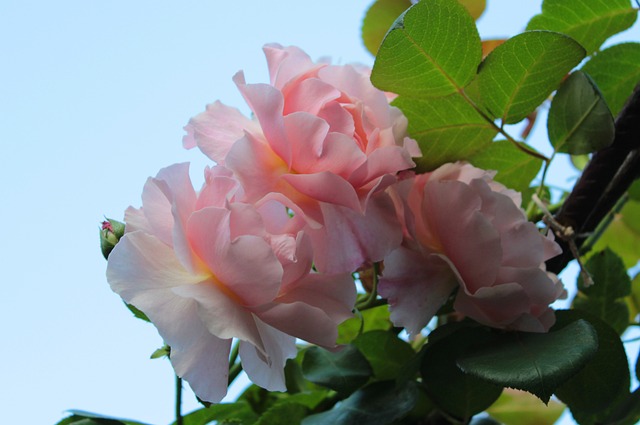
Rambler roses are fast-growing with long, flexible branches. They quickly grow over fences and walls and produce beautiful summer flowers.
Follow the same process for pruning rambler roses as climbers.
6. Pruning weeping roses
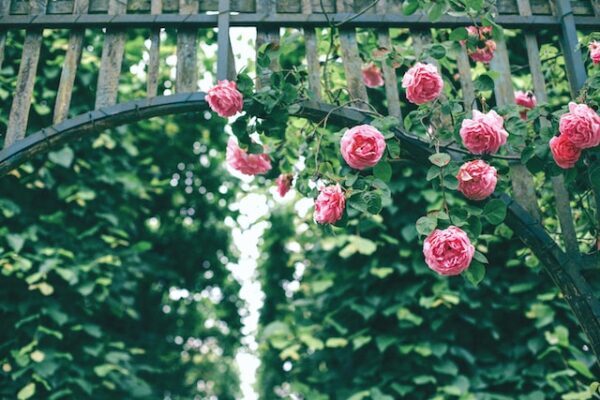
Weeping roses are perfect for romanticising arches and pergolas. Wait until late autumn/early winter to prune this variety, removing thin and weak branches and inward-growing stems.
Prune the remaining branches to half their original length.
Ready to put your pruning shears to work?
Hopefully, you have new insight into pruning your rose bushes, regardless of the variety.
Remember, pruning helps boost growth and encourages flowering, so if an old, oversized bush has become reluctant to burst into bloom, revive it for the next season by cutting it back and shaping it.
Avoid cutting more than a third of the length of the branches, although some varieties are fine at half the original size — check the instructions above for the specifics for your particular type of bush.
So, grab your clean pruning shears, and get shaping and deadheading for tremendous growth next season.
FAQs
Depending on the variety of your rose bush, cut the branch around 5-10cm above an outward-facing bud — this helps develop new shoots that grow outwards. Angle the cut at 45 degrees to allow water run-off. Pruning promotes healthy growth and abundant flowering.
In some cases, it’s possible to prune a rose bush hard. However, if you haven’t pruned for a couple of years, avoid pruning too hard to compensate for lost time. In this case, cut no more than ⅓ of the original branch’s length to prevent stressing the plant. It may take some time before the bush fully recovers and blooms.
Yes, it’s a good idea to deadhead withered roses to encourage the plant to produce new blooms. Prune to about 5-10cm above an outward-facing bud — this will help stimulate outward growth, giving the plant a good shape.
Any questions?
I hope you’ve got all the information you need to prune your rose bushes successfully. But if you have any questions, get in touch, and we’ll get back to you pronto!
Alternatively, explore our comprehensive Help & Advice section for a range of expert lawn care and gardening tips that will help transform your garden into a haven of beauty and tranquillity.
Thanks for reading, and happy pruning!
-
How to Build a DIY Greenhouse: A Practical Guide for Smart SpendersImagine extending your growing season throughout the year, nurturing tender plants regardless of the weather, and creating a personal garden sanctuary. This is precisely what a DIY greenhouse offers you. Let’s learn how to build one.Read more
-
How to Grow Eucalyptus in British GardensWith a little love and care, eucalyptus trees can thrive in English gardens. Since they don’t germinate well without proper help, there are not considered invasive. So, there is no reason not to plant them if you enjoy their looks.Read more
-
Transform Your Garden with All-Year-Round Flowering PlantsDid you know you can enjoy blooming flowers even in January? With the right selection of all year round plants, there’s no need to wait until spring to add some colour to your garden.Read more
-
How to Create a Butterfly Garden: A Simple Guide for British GardensThe UK's butterfly population includes 59 different species. These beautiful winged creatures face a steady decline because of habitat loss, pollution and changing weather patterns. Your garden can become a vital link between nature reserves and natural habitats. Let’s explore how.Read more
-
Volcanic Rock Dust for Your Garden—Application and TipsDid you know that volcanic rock dust is a brilliant organic soil improver? This article explains exactly what it's good for and how to use it properly.Read more
-
How to Use Landscape Fabric ProperlyIf weeds or erosion in your garden are troubling you, landscape fabric might be the solution. We’ll explain how and when to use it properly, just keep on reading.Read more
-
Hostas: A Complete Care GuideIf you have a north-facing garden or some shady corners on your property, hostas are the plants for you. These green delights thrive particularly well in partial to full shade and require consistently moist soil to perform at their best.Read more
-
How to Grow Grapes in Your Garden: A Simple Step-by-Step GuideGrapevines produce some tasty fruits, but often they are simply grown for their gorgeous leaves. Whatever your motivation may be, we have a guide on how to grow grapes for you.Read more
Leave a comment
Your answer will be displayed on the site and the interested party will be notified by email.
Leave a comment
Have a question or want to share your experience? Leave us a comment.

- Order by 2PM = shipped today
- 250.000+ satisfied customers!
- 60 day satisfaction guarantee

- Order by 2PM = shipped today
- 250.000+ satisfied customers!
- 60 day satisfaction guarantee

- Order by 2PM = shipped today
- 250.000+ satisfied customers!
- 60 day satisfaction guarantee

🌱 All important maintenance moments for your lawn during the year. Leave your email and we will send you the lawn calendar for free.
Enter your email
Receive the lawn calendar in the mail
Enjoy a green lawn all year round!





















Comments (0)
There are no comments yet. Well then, what are you waiting for to
Be the first to write your comment!inaugurate this pretty page?
Do you have some comments?